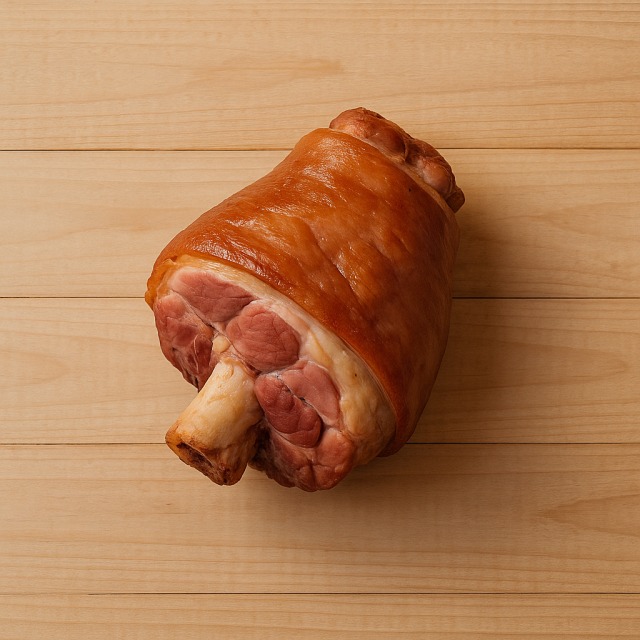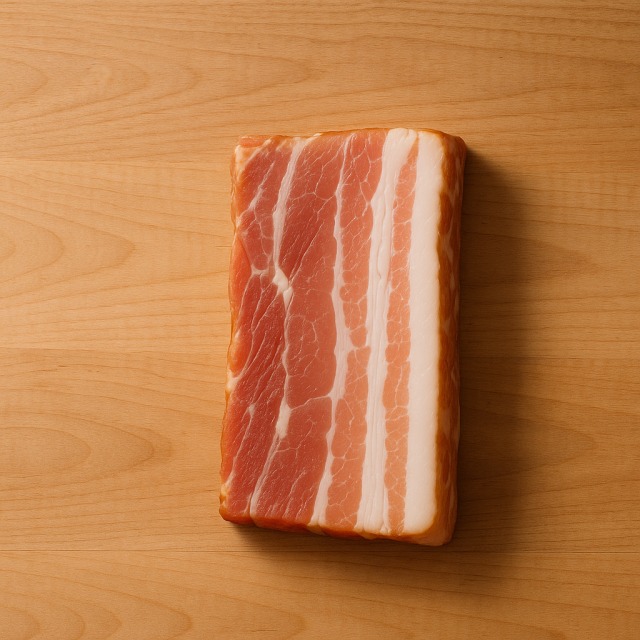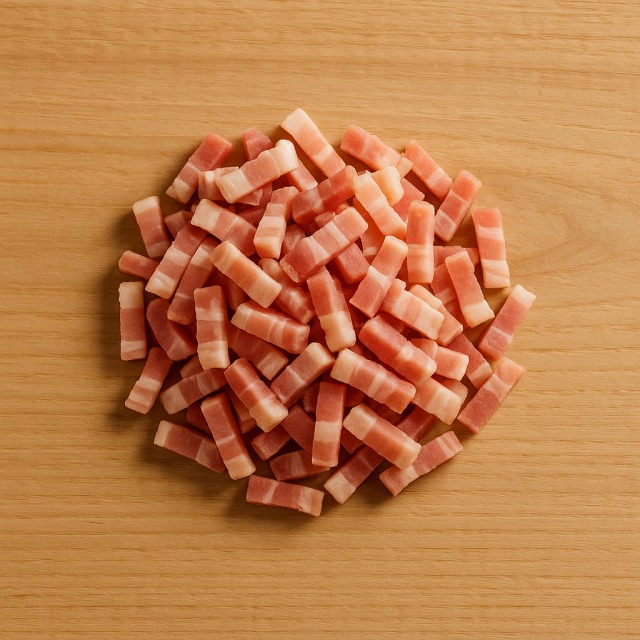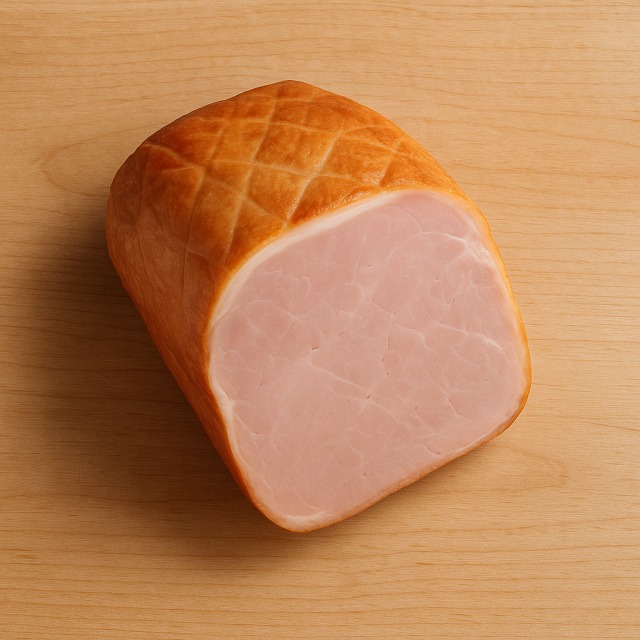Calorie Chart / Meat & Eggs / Ham hock
How Many Calories Are in Ham hock?
Calculation of the nutritional value & Recommended Dietary Intake of ham hock
For g and a calorie requirement of kcal
| Calories 258 kcal | Proteins 30 g | Lipids 15 g | Carbohydrates 0.8 g |
| 13% | 40% | 22% | 0% |
Health benefits of ham hock

Ham hock - 100g
Calories 172 kcal
Proteins 20 g
Lipids 10 g
Carbohydrates 0.5 g
With around 172 calories per 100 g, ham hock is considered a moderate-calorie cut of pork. Those calories are largely supplied by its 20 g of high-quality proteins, making it valuable for muscle maintenance while keeping calorie intake under control. It also delivers B-group vitamins (notably B1, B3, B6, and B12) that support energy metabolism, so your body can turn those calories into usable fuel more efficiently.
Mineral-wise, ham hock furnishes iron and zinc—useful for oxygen transport and immune function—and a meaningful dose of selenium, an antioxidant trace element. Slow simmering of the connective tissue releases collagen and gelatine, compounds often highlighted for supposed joint and skin benefits ("supposed" because human evidence is still limited). Thanks to its bone and marrow content, the broth becomes rich but adds comparatively few extra calories.
Historically, ham hock has been a thrifty farmer's ingredient: the bone added depth to soups and stews when overall household calories were scarce, while the meat provided flavour without the higher calories of fattier cuts. In Germany, it turns into "Haxe," in France it stars in "jambonneau," and in the American South, it seasons greens—all traditions that respect both budget and calories.
Tips for incorporating ham hock into a balanced diet
If you wish to keep calories in check, opt for a long, gentle simmer of ham hock in plenty of aromatic vegetables such as carrot, celery, and leek. Skim the surface fat halfway through cooking; you'll retain flavour while removing visible fat and shaving calories from the final dish.
For a complete plate, shred the cooked meat and fold it into a salad of green beans and brown rice. The extra fibre will increase satiety, helping you control calories over the rest of the day. Another classic is the Alsatian mix of ham hock with sauerkraut with meat; replace part of the sausages with extra fermented cabbage to lighten calories but keep the tangy character.
Looking for comfort that won't overload your daily calories? Try a lentil stew inspired by salted pork with lentils, but swap in diced vegetables for half the legumes and use just one ham hock for four servings. Finally, chilled leftovers can be turned into a quick sandwich on wholemeal bread with mustard and pickles—portion-controlled, protein-rich, and moderate in calories.
Frequently Asked Questions
- How many calories are in ham hock?
- There are 172 kcal per 100 g.
- Is ham hock high in fat compared with its calories?
- It supplies about 10 g of lipids per 100 g, so roughly half of its calories come from fat, which is moderate for pork but something to monitor if you are counting calories strictly.
- Can I reduce the calories of ham hock broth?
- Yes. After simmering, chill the stock; the fat will solidify on top and can be lifted off, removing several calories without sacrificing flavour.
- Is ham hock suitable for a high-protein, controlled-calorie diet?
- Absolutely. With 20 g of proteins for 172 calories, its protein-to-calorie ratio is favourable for weight management and muscle recovery.
- How does ham hock compare in calories to cooked ham?
- Cooked ham averages about 110 kcal per 100 g, so it is lower in calories than ham hock, mainly because ham hock includes skin and connective tissue.
- What side dishes help balance the calories of a ham hock meal?
- Choose high-fibre, low-calorie sides such as broccoli, pumpkin purée, or a crisp spinach salad to keep total calories reasonable.
- Does removing the skin lower the calories of ham hock?
- Yes. The skin is fat-dense; trimming it before or after cooking can reduce calories and saturated fat content per serving.
Similar foods
Information provided by Calorie Menu may contain inaccuracies or errors. It cannot, under any circumstances, substitute medical advice or medication.










